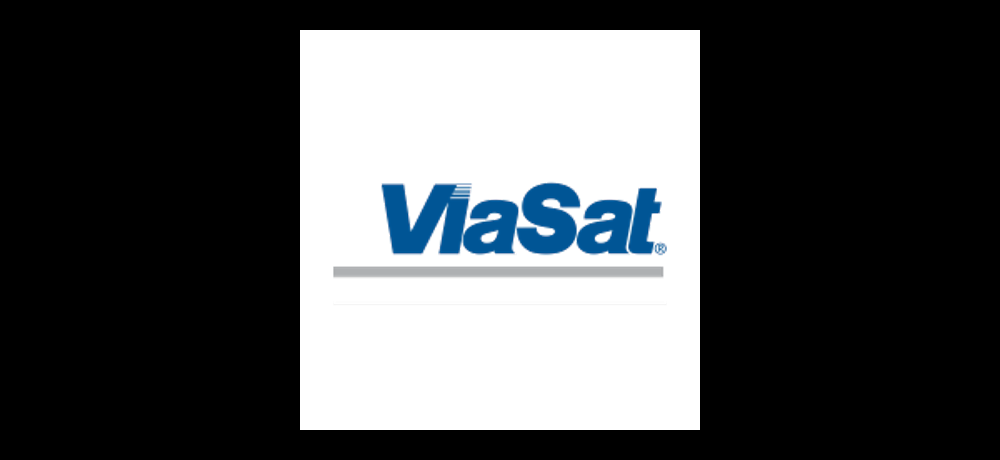Viasat demonstrates direct-to-device satellite connectivity for vehicles in Brazil, enabling new automotive applications and improved safety.
Quiver AI Summary
Viasat, Inc. has announced a groundbreaking demonstration of direct-to-device (D2D) connectivity in the automotive sector, marking a significant advancement in satellite communications. Conducted over four months in Brazil, the trials allowed vehicles to connect directly to Viasat’s L-band satellites and Skylo’s network, enabling narrowband tracking and messaging capabilities. This was made possible through a collaboration with GuardianSat and the use of 3GPP standards-based technology. The integration of Quectel’s satellite communication modules facilitated seamless switching between satellite and cellular networks, enhancing connectivity in rural areas. This innovation aims to support a range of applications, including real-time supply chain tracking and emergency services, ultimately promoting safer and more efficient transportation. Viasat is also actively developing a D2D ecosystem with various industry partners to expand satellite connectivity solutions further.
Potential Positives
- Viasat has successfully demonstrated a first-of-its-kind direct-to-device (D2D) connectivity for the automotive sector, potentially leading to widespread adoption of satellite connectivity in vehicles.
- The trials in Brazil enabled vehicles to connect directly to Viasat's L-band satellites, showcasing the reliability and versatility of satellite communication for automotive use cases.
- The integration of advanced technology from partners such as Quectel Wireless Solutions and Acceleronix enhances the capability of vehicles to maintain uninterrupted connectivity, even in rural areas.
- This initiative positions Viasat at the forefront of innovation in satellite connectivity, opening new avenues for safety services and improving efficiency in the transport sector.
Potential Negatives
- Risks associated with satellite operation could significantly impact the execution of the D2D technology, as outlined by the forward-looking statements.
- Viasat's dependency on multiple external partners and technologies to realize the D2D platform introduces potential vulnerabilities and delays in implementation.
- Regulatory changes affecting spectrum availability could hinder Viasat's ability to effectively deploy its products and services, impacting future growth opportunities.
FAQ
What is direct-to-device connectivity in the automotive sector?
Direct-to-device connectivity allows vehicles to connect directly to satellites for real-time data and services without dedicated terminals.
Where did Viasat conduct its D2D connectivity tests?
The tests were conducted between Blumenau and Curitiba in Southern Brazil over the last four months.
Who partnered with Viasat for the direct-to-device demonstration?
Viasat partnered with GuardianSat, Quectel Wireless Solutions, and Acceleronix for the D2D connectivity trials.
What are the benefits of D2D connectivity for vehicles?
D2D connectivity enables tracking, monitoring, emergency assistance, and improved supply chain logistics even in rural areas.
How does D2D technology impact the automotive industry?
This technology opens the door for wider adoption of satellite services, enhancing safety and efficiency in the transport sector.
Disclaimer: This is an AI-generated summary of a press release distributed by GlobeNewswire. The model used to summarize this release may make mistakes. See the full release here.
$VSAT Congressional Stock Trading
Members of Congress have traded $VSAT stock 1 times in the past 6 months. Of those trades, 1 have been purchases and 0 have been sales.
Here’s a breakdown of recent trading of $VSAT stock by members of Congress over the last 6 months:
- REPRESENTATIVE DEBBIE WASSERMAN SCHULTZ purchased up to $15,000 on 10/23.
To track congressional stock trading, check out Quiver Quantitative's congressional trading dashboard.
$VSAT Insider Trading Activity
$VSAT insiders have traded $VSAT stock on the open market 6 times in the past 6 months. Of those trades, 2 have been purchases and 4 have been sales.
Here’s a breakdown of recent trading of $VSAT stock by insiders over the last 6 months:
- TEACHERS PENSION PLAN BOARD ONTARIO sold 3,750,000 shares for an estimated $33,750,000
- INVESTMENT BOARD PRIVATE HOLDINGS (4) INC. CPP sold 3,750,000 shares for an estimated $33,750,000
- LUXTOPHOLDING SARL TRITON sold 3,750,000 shares for an estimated $33,750,000
- RICHARD A BALDRIDGE has made 2 purchases buying 55,000 shares for an estimated $820,000 and 0 sales.
- MARK J MILLER (EVP, Chief Technical Officer) sold 3,564 shares for an estimated $32,824
To track insider transactions, check out Quiver Quantitative's insider trading dashboard.
$VSAT Hedge Fund Activity
We have seen 139 institutional investors add shares of $VSAT stock to their portfolio, and 119 decrease their positions in their most recent quarter.
Here are some of the largest recent moves:
- FPR PARTNERS LLC removed 1,523,535 shares (-100.0%) from their portfolio in Q3 2024, for an estimated $18,191,007
- TWO SIGMA INVESTMENTS, LP added 958,706 shares (+538.7%) to their portfolio in Q4 2024, for an estimated $8,158,588
- TENZING GLOBAL MANAGEMENT, LLC added 842,500 shares (+inf%) to their portfolio in Q4 2024, for an estimated $7,169,675
- STATE STREET CORP added 833,445 shares (+18.7%) to their portfolio in Q4 2024, for an estimated $7,092,616
- BANK OF AMERICA CORP /DE/ added 818,301 shares (+149.6%) to their portfolio in Q4 2024, for an estimated $6,963,741
- POINT72 ASSET MANAGEMENT, L.P. added 716,530 shares (+551.2%) to their portfolio in Q4 2024, for an estimated $6,097,670
- NEUBERGER BERMAN GROUP LLC added 700,533 shares (+16.1%) to their portfolio in Q4 2024, for an estimated $5,961,535
To track hedge funds' stock portfolios, check out Quiver Quantitative's institutional holdings dashboard.
Full Release
CARLSBAD, Calif., March 06, 2025 (GLOBE NEWSWIRE) -- Viasat, Inc. (NASDAQ: VSAT), a global leader in satellite communications, today announced the first-of-its-kind demonstration of direct-to-device (D2D) connectivity for the automotive sector — opening the door for widescale adoption of satellite connectivity for automotive use cases.
In a country-first, the tests saw different vehicles connect directly to Viasat’s highly reliable L-band satellites and Skylo’s network, to provide narrowband tracking, monitoring and messaging capabilities. The trials took place over the last four months between Blumenau and Curitiba in Southern Brazil.
The tests, conducted by Viasat’s ecosystem partner GuardianSat, used 3GPP standards-based non-terrestrial-network (NTN) service infrastructure through Viasat’s connectivity partner, Acceleronix. In addition, Quectel Wireless Solutions provided advanced CC660D-LS NTN satellite communication modules, paired with Quectel’s high-performance antennas, that enabled the vehicles to seamlessly switch between satellite and cellular networks, ensuring uninterrupted connectivity based on location.
By leveraging 3GPP-enabled D2D technology, car manufacturers and service providers are able to offer a variety of new services to consumers and businesses. Vehicles can stay connected even in rural locations, allowing passengers and cargo to stay safe wherever they are. Narrowband applications for D2D in the automotive space will include the provision of positioning data, predictive maintenance, emergency and breakdown assistance, and real-time supply chain tracking.
Satellite and cellular technologies have started on a pathway to convergence after 3GPP’s Release 17 standard , which outlines an approach for devices like mobile phones, vehicles and industrial machinery to connect to satellites without a dedicated satellite terminal. This technology, known as direct-to-device, is changing the way that satellite connectivity is delivered.
Viasat is currently developing a direct-to-device ecosystem of chipset manufacturers, MNOs, OEMs and solution providers to augment its existing MSS network capabilities, which are already utilized for safety services at sea and in the air. The company recently joined the 5G Automotive Association to support connected transport applications, following three high-profile mobile device demonstrations in India, Saudi Arabia, and United Arab Emirates last quarter.
Sandeep Moorthy, Chief Technical Officer - Viasat Commercial Services, said: “When people think of direct-to-device they usually think about keeping cell-phones connected via satellite. While that is a vital benefit, there is also a massive opportunity for the transport industry, with the economics of direct-to-device opening the door for mass-market adoption. D2D satellite connectivity has the potential to save lives when drivers are outside of cellular networks, while connected vehicles can also provide real-time data for a huge range of applications which ultimately add up to a more efficient and sustainable transport sector.”
“The integration of Quectel’s CC660D-LS satellite module with Viasat’s network in this demonstration highlights the transformative potential of this technology,” said Ricardo Simon, Sales Director for LatAm at Quectel Wireless Solutions. “Seamless roaming between satellite and cellular networks ensures uninterrupted connectivity regardless of location, unlocking a broad range of critical applications.”
About Viasat
Viasat is a global communications company that believes everyone and everything in the world can be connected. With offices in 24 countries around the world, our mission shapes how consumers, businesses, governments and militaries around the world communicate and connect. Viasat is developing the ultimate global communications network to power high-quality, reliable, secure, affordable, fast connections to positively impact people’s lives anywhere they are - on the ground, in the air or at sea, while building a sustainable future in space. In May 2023, Viasat completed its acquisition of Inmarsat, combining the teams, technologies and resources of the two companies to create a new global communications partner. Learn more at
www.viasat.com
, the
Viasat News Room
or follow us on
LinkedIn
,
X
,
Instagram
,
Facebook
,
Bluesky
,
Threads
, and
YouTube
.
Copyright © 2025 Viasat, Inc. All rights reserved. Viasat, the Viasat logo and the Viasat Signal are registered trademarks in the U.S. and in other countries of Viasat, Inc. All other product or company names mentioned are used for identification purposes only and may be trademarks of their respective owners.
Viasat, Inc. Contacts
PR Contact – Richard Jones, External Communications,
[email protected]
Lisa Curran/Peter Lopez, Investor Relations,
[email protected]
About Quectel
Quectel’s passion for a smarter world drives us to accelerate IoT innovation. A highly customer-centric organization, we are a global IoT solutions provider backed by outstanding support and services. Our growing global team of 5,600 professionals sets the pace for innovation in
cellular
,
GNSS
,
Wi-Fi and Bluetooth
modules as well as
antennas
and services.
With regional offices and support across the globe, our international leadership is devoted to advancing IoT and helping build a smarter world.
For more information, please visit: www.quectel.com , LinkedIn , Facebook , and X .
Media contact: [email protected]
Forward-Looking Statements
This press release contains forward-looking statements that are subject to the safe harbors created under the Securities Act of 1933 and the Securities Exchange Act of 1934. Forward-looking statements include, among others, statements that refer to the features, benefits, uses and performance of direct-to-device technology, including the solution offered by Viasat, Guardian SAT, Quectel and Acceleronix; and the future development of a direct-to-device ecosystem by Viasat. Readers are cautioned that actual results could differ materially from those expressed in any forward-looking statements. Factors that could cause actual results to differ include: risks associated with the construction, launch and operation of satellites, including the effect of any anomaly, operational failure or degradation in satellite performance; our ability to successfully develop, introduce and sell new technologies, products and services; future technological dependencies required to realize D2D platforms; technological enhancements required to provide direct-to-device solutions including technology provided by OEMs, MNOs, chipset manufacturers and other members of the ecosystem; the effect of adverse regulatory changes (including changes affecting spectrum availability or permitted uses) on our ability to sell or deploy our products and services; changes in the way others use spectrum; our inability to access additional spectrum, use spectrum for additional purposes, and/or operate satellites at additional orbital locations; competing uses of the same spectrum or orbital locations that we utilize or seek to utilize; and other factors affecting the connectivity sector, generally. In addition, please refer to the risk factors contained in our SEC filings available at www.sec.gov, including our most recent Annual Report on Form 10-K and Quarterly Reports on Form 10-Q. Readers are cautioned not to place undue reliance on any forward-looking statements, which speak only as of the date on which they are made. We undertake no obligation to update or revise any forward-looking statements for any reason.
A photo accompanying this announcement is available at https://www.globenewswire.com/NewsRoom/AttachmentNg/dcca5806-f21d-4e9e-bff0-62ee3c1cd4e2


